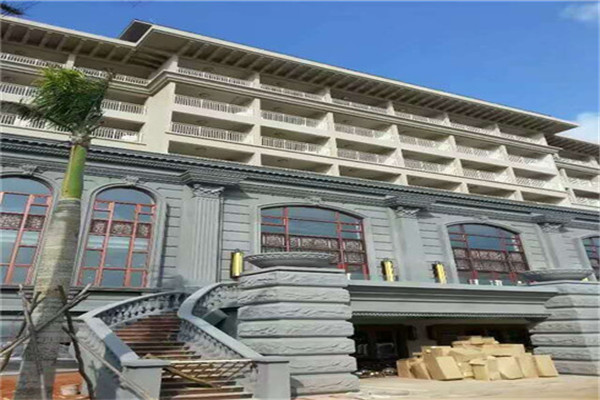
Marble, granite, Hui'an stone, Qingtian stone, Shoushan stone, Guicui stone and other materials are generally used for stone carving. Granite and marble are suitable for carving large statues; Qingtian stone and Shoushan stone are rich in color, which are more suitable for small stone carvings. There are many ways to make stone carvings. According to the nature of stone materials and the habits of the carvers, stone carvings can be roughly divided into two types: first, traditional methods. Conception, composition, modeling and stone carving are all done by individuals alone. For large-scale carving of lines, the horizontal and vertical lines shall be drawn on the stone, the grid shall be made to take materials, and the simple measurement and positioning method shall be used for carving. The second is to adopt a new process, that is, first make a clay sculpture, turn it into a plaster statue, then take the plaster statue (model) as the basis, rely on the point shaped instrument, and then carve it into a stone statue.

The types of stone inscription monuments include monuments, memorial monuments, merit monuments, temple monuments, Dianzi monuments, mausoleum monuments, etc. Except for a few wordless steles, they are generally literal steles. Usually, characters are carved on the body of the stele, and some are accompanied by carved patterns. The pedestal and cover of the stele are mostly carved with decorations, birds, animals, flowers, and mascots. The cover of the stele of the imperial family is also carved with dragons and phoenixes. Marble is the most commonly used stone for making the stele, and sandstone and granite are also commonly used. Some of the steles are huge, and some of them become a group of steles. Stone books are written with stone instead of paper, and carved instead of pen, which is very ingenious. There are many famous works of stone tablet processing and stone calligraphy carving. For example, "Xi'an Forest of Steles" includes more than 3000 historical steles from Han Dynasty to Qing Dynasty. It is the largest collection of stone books in China. Together with the "Forest of Steles in Hanlin" under construction in Kaifeng, it can be said that it is a sea of steles, and it is a collection of calligraphies of regular script, line, grass, seal script, clerical script and Wei style by famous calligraphers of all ages. In addition to large-scale carvings such as stele books and cliff carvings, there are also some stone carvings, such as mourning volumes in imperial tombs and modern fine carved small stone books, such as more than 100 mourning volumes of white marble excavated in the tomb of the prince of the Tang Dynasty, and six stone books of "Thirty six Strategies" carved in tile slate in modern Chengdu, a total of 26 pages and 1278 words, bound into a volume with eyeliner, each page is 2.2.6mm, which can be read.
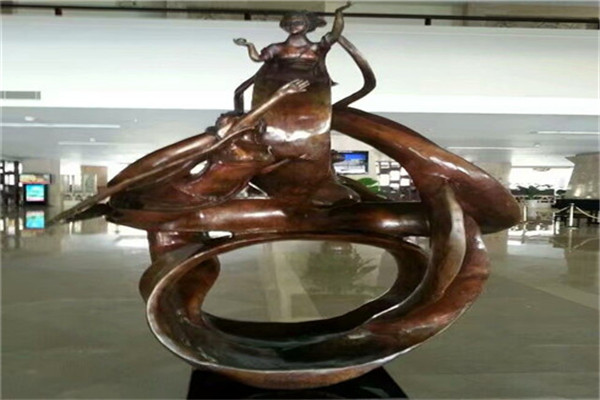
According to the materials, rockeries can be divided into earth mountains, stone mountains, and earth rock mountains (earth is often called earth mountains with stones, and stone is often called stone mountains with stones) According to the construction method, it can be divided into mountain building (block building earth mountain), mountain building (mountain rock piling into a mountain), mountain chiseling (natural rock digging into a mountain) and plastic mountain (traditionally made of lime slurry, modern rockeries made of cement, brick, steel wire mesh, etc., referred to as plastic stone rockery in the industry. cost performance Abstract sculpture The rockery can be divided into garden hill, hall hill, lou hill, pavilion hill, shufang hill, pool hill, indoor hill, wall hill and beast hill according to its location and use in the garden. The combination form of rockery is divided into mountain body and water body. Abstract sculpture customized Hainan sculpture mountains include peaks, ridges, peaks, ridges, valleys, gullies, hillocks, walls, rocks, hills, caves, docks, foothills, platforms, walkways and plank roads Water bodies include springs, waterfalls, ponds, streams, streams, ponds, rocks and Tingshi. The landscape should be integrated to complement each other.
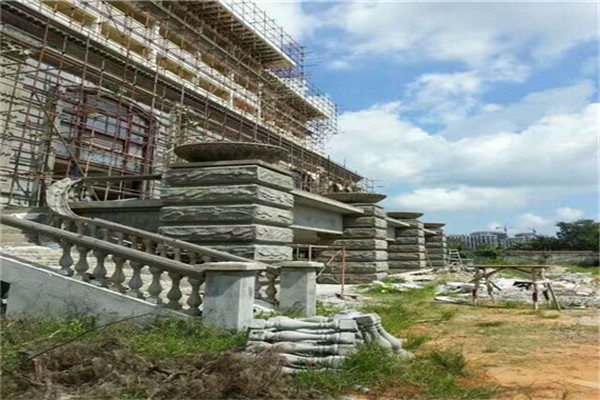
Most of the jades mentioned in daily life refer to nephrite, and there are many kinds of nephrite products. Generally, they refer to white sheepskin jade, white jade, topaz, purple jade, black jade, jasper, sapphire, ruby and northeast Xiuyu produced in Xinjiang. In the jade carving, the white jade with sheepskin is fine in texture and strong in luster, as white as sheepskin, which can be called "the king of nephrite" and "the crown of white jade". In addition, Nanyang jade, Lantian jade, Hotan jade, agate, crystal, coral, turquoise, lapis lazuli, etc., all belong to the category of nephrite. Later, due to the opening of the Silk Road, the jade produced in Hotan, Xinjiang, was unanimously recognized and began to play a leading role in the processing of royal, official and folk jade. Nephrite gradually evolved into a synonym for hotan jade.
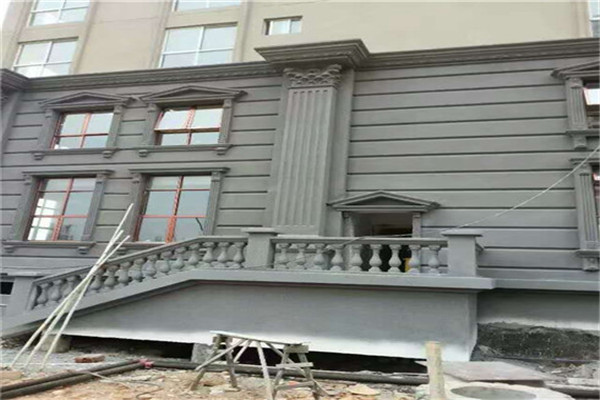
Relief is a kind of sculpture. The sculptor carves the image he wants to shape on a flat plate, making it separate from the plane of the original material. Relief is the product of the combination of sculpture and painting. It deals with objects in a compressed way, and displays three-dimensional space by perspective and other factors. It is only for one side or two sides to see. The reliefs are usually attached to another plane, so they are used more in architecture and can be seen on utensils and implements. Due to its compression characteristics, it occupies less space, so it is suitable for decoration in a variety of environments. In recent years, it has played an increasingly important role in urban beautification. The relief is as rich and colorful as the round sculpture in content, form and material. The materials of relief include stone, wood, ivory and metal. The relief is a semi vertical sculpture whose image shape protrudes from the stone surface (as opposed to the relief). According to the different depth of stone removal in image modeling, it can be divided into low relief and high relief. The bas reliefs are single level statues with relatively simple contents; The high relief is a multi-level statue with complicated contents. The carving technique and expression style of relief are basically the same as those of round sculpture. Many ancient and modern large-scale memorial buildings, high-end mansions and private houses are equipped with such decorations. Their main works are wall blocks, flower windows, dragon columns (early) and column bases.
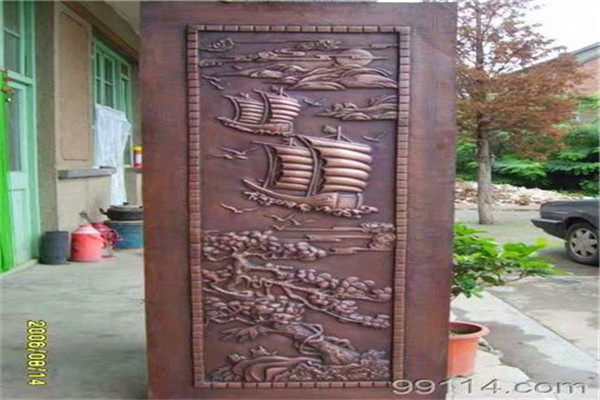
The handicrafts made by forging copper are lifelike in shape, easy to sculpt, and the lines of the handicrafts are very smooth. Even if you look carefully, you will not find any shortcomings. Of course, you need to ensure the craftsmanship of the sculptors. Only the craftsmanship can ensure the shape image of the forged copper sculpture handicrafts. In the process of production, brass or copper plate is usually used as the base, and then forging is carried out, and multiple forged copper plates are used to show the overall image of the handicraft. For many sculpture artists, corresponding copper plates are selected for forging. The forging copper processing technique is unique. Attention should be paid to heating the copper plate, then forging, after a certain forging, polishing and polishing to make the surface smooth, so as to become the desired forging copper sculpture handicrafts, which are all hand-made, very public welfare, natural and vivid in appearance. Attention should be paid to the handicrafts produced, Certain maintenance is required to ensure its appearance is not affected.






